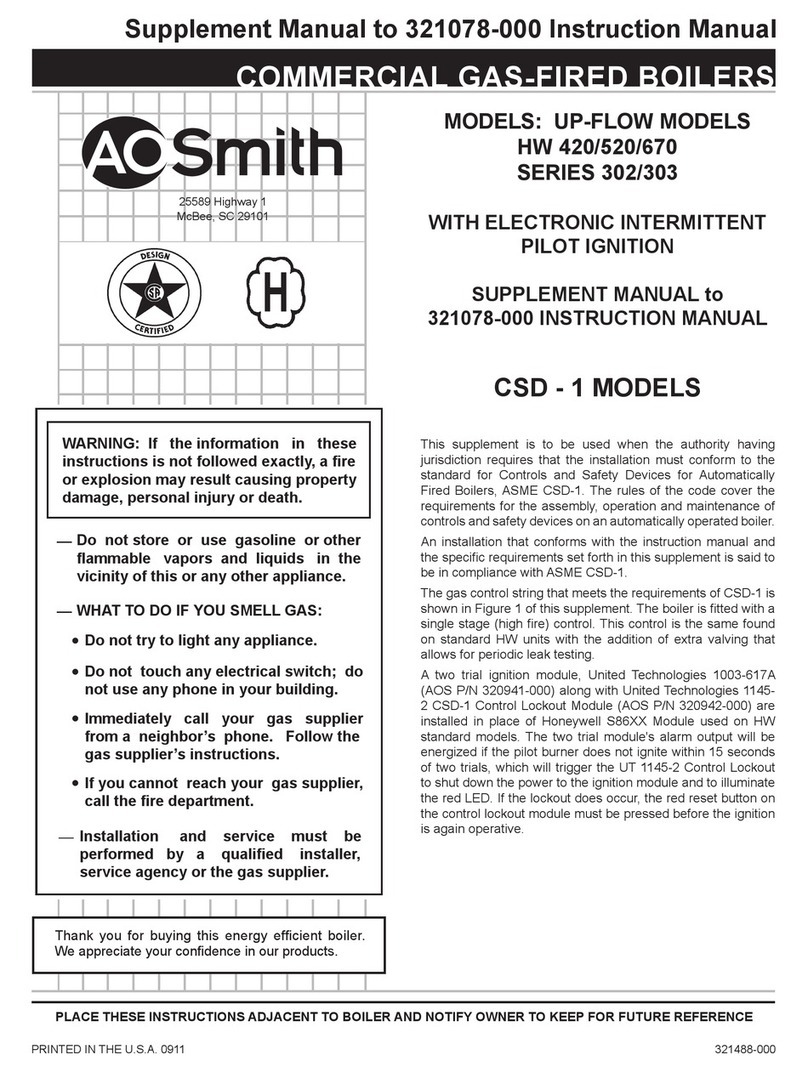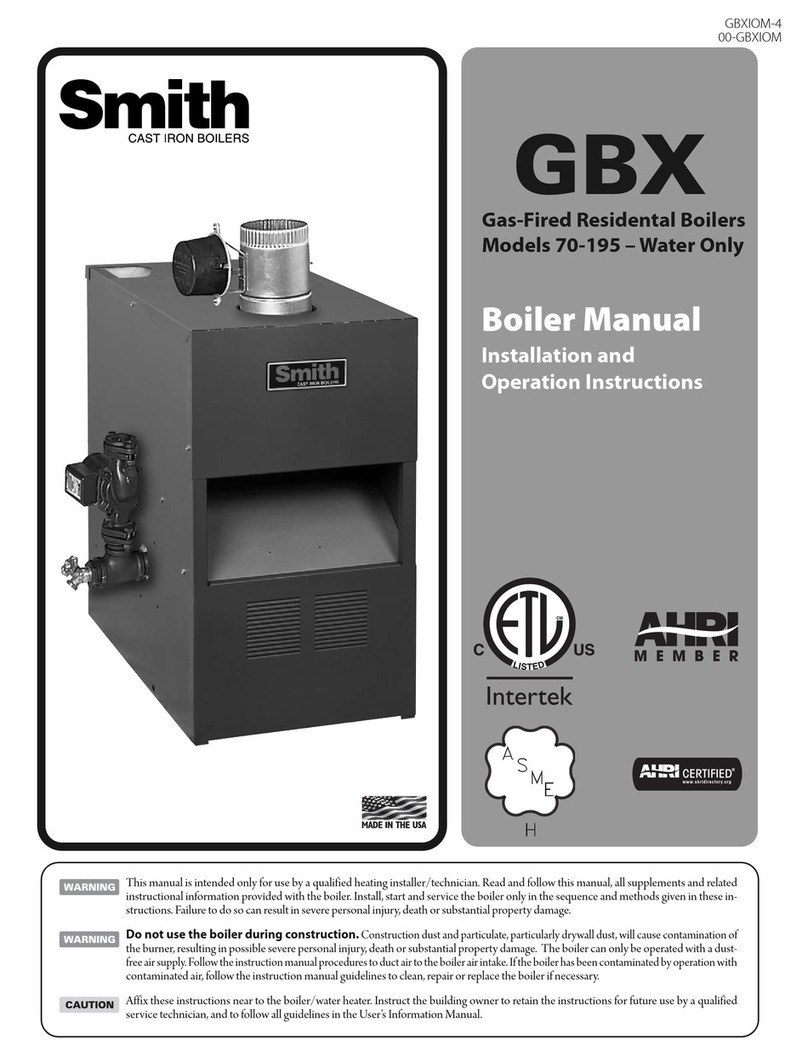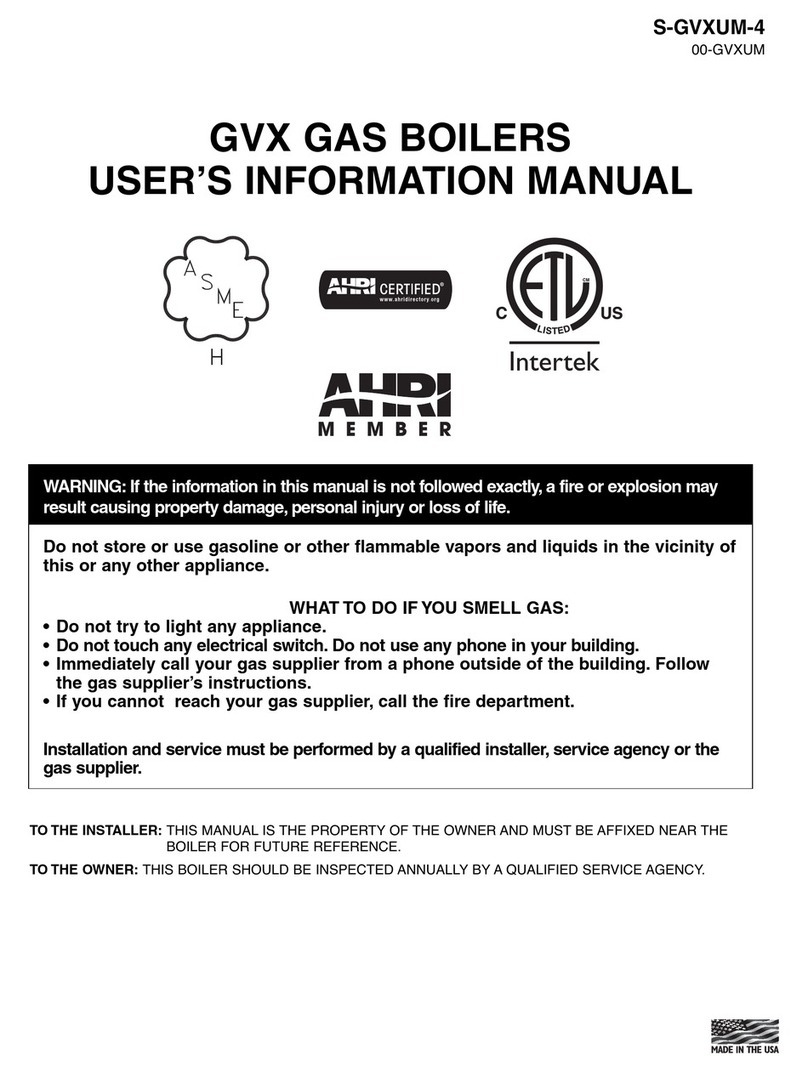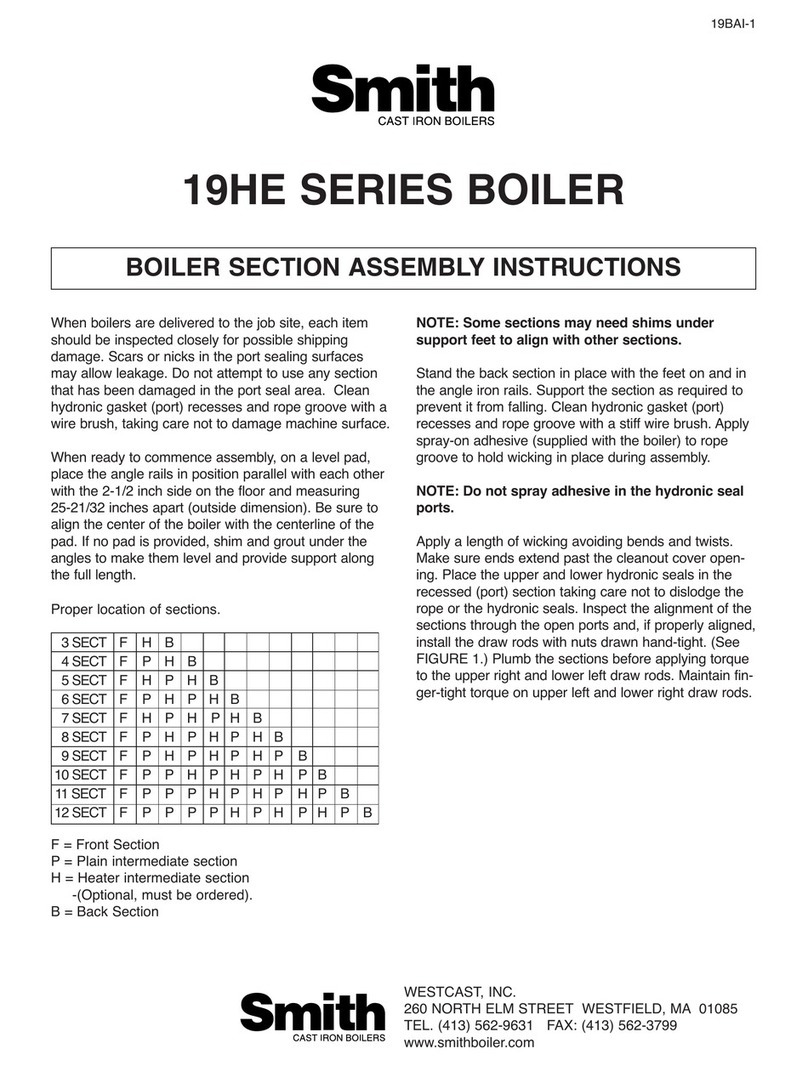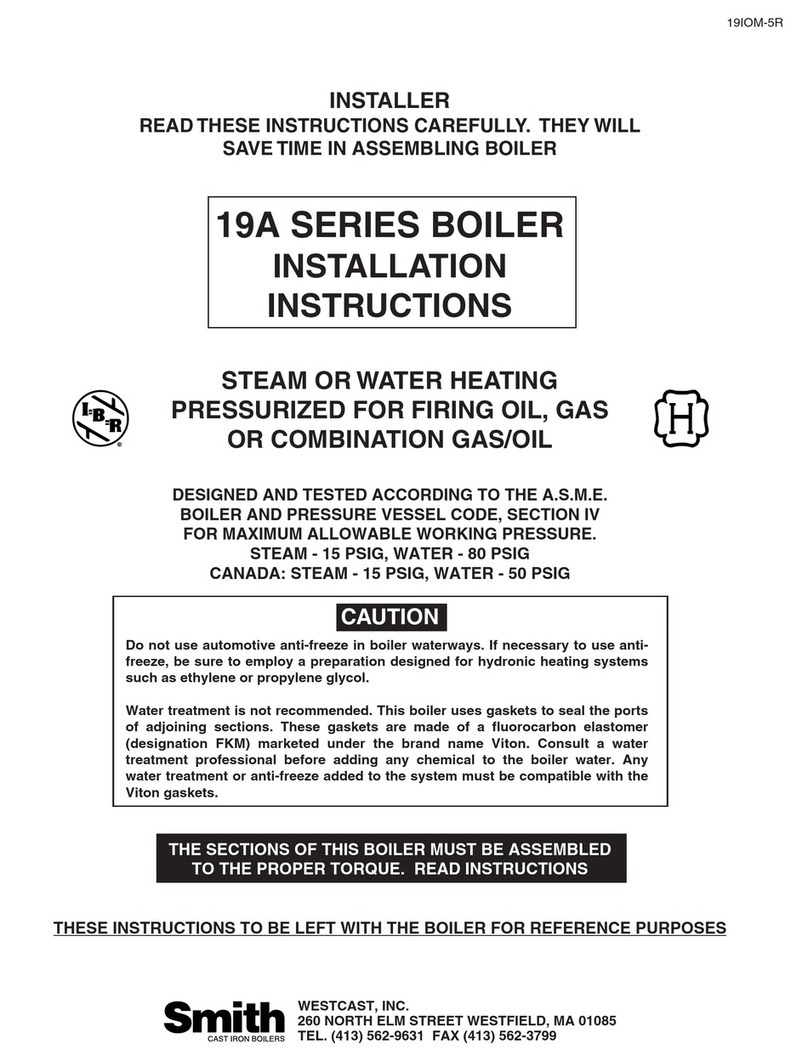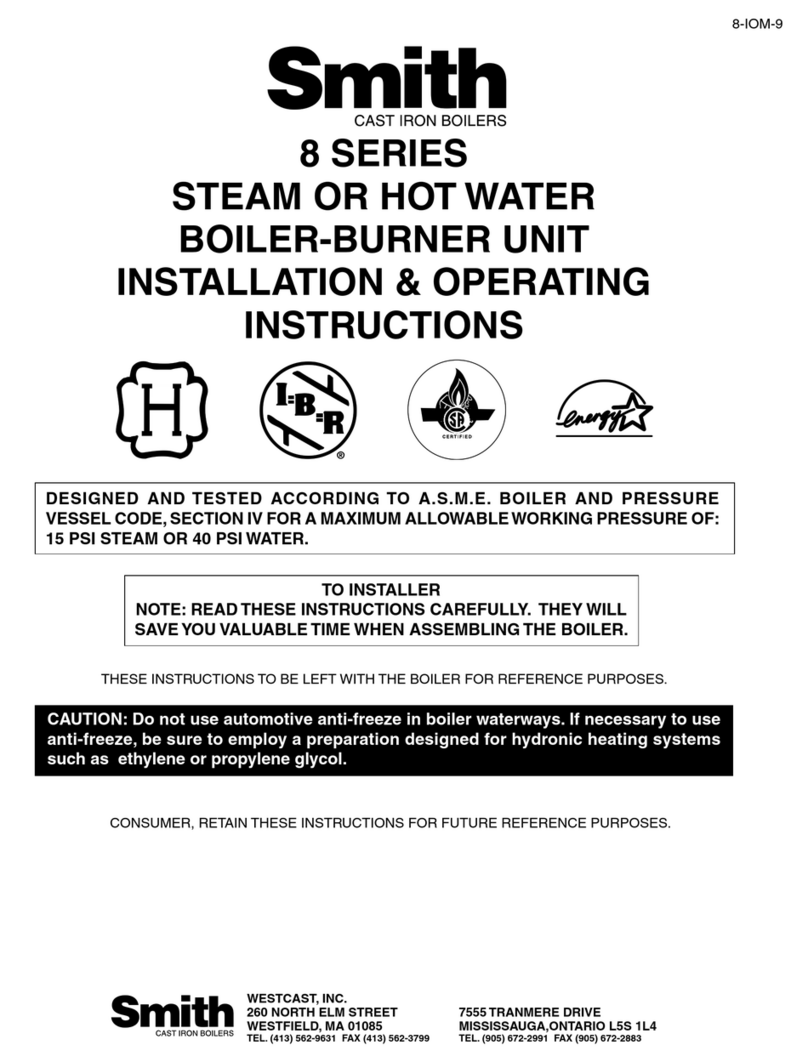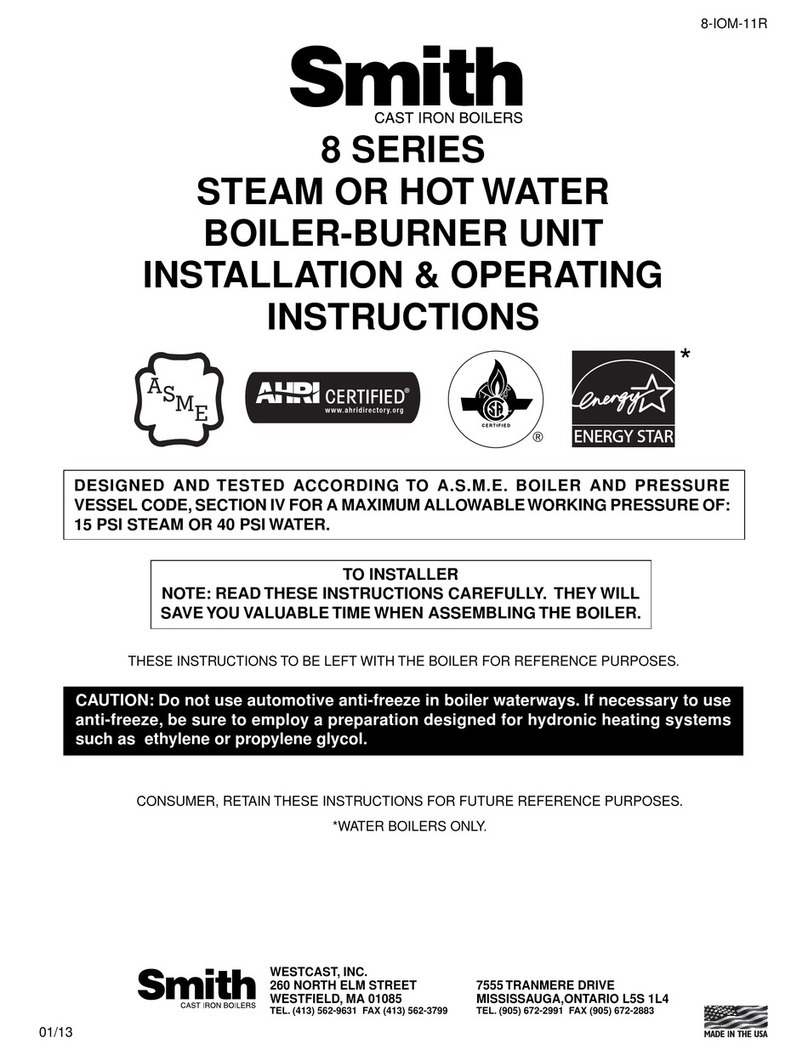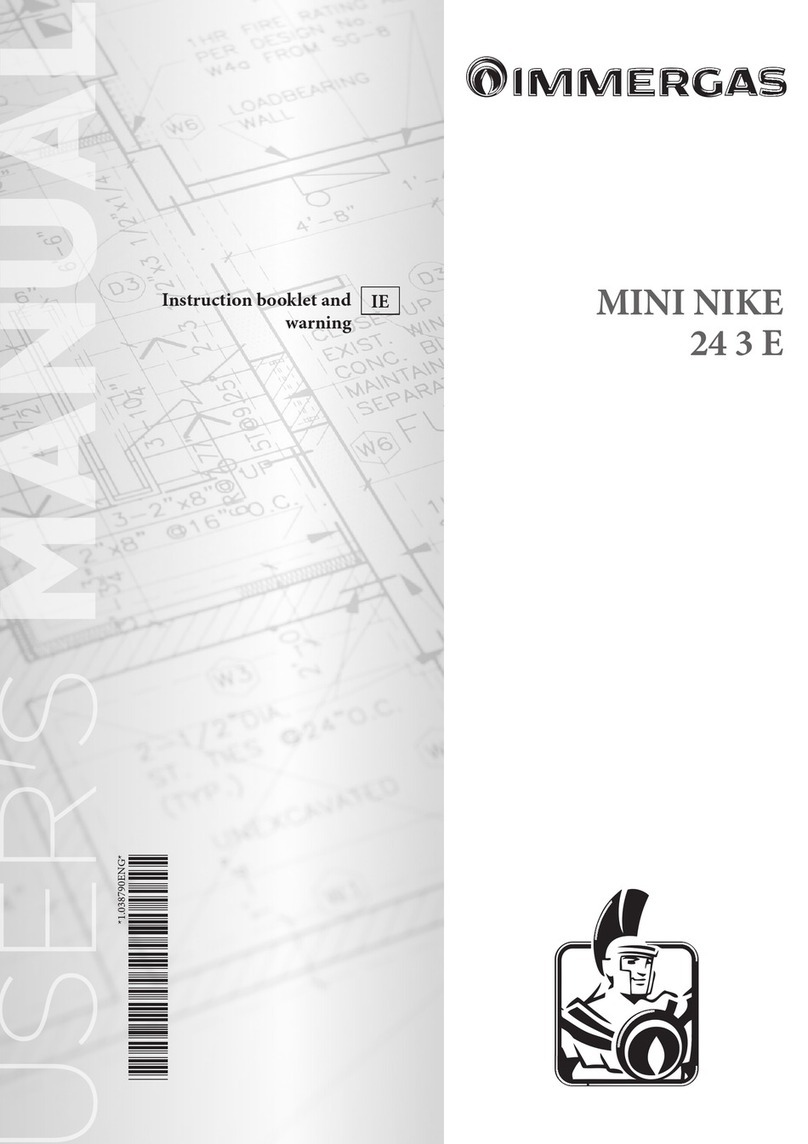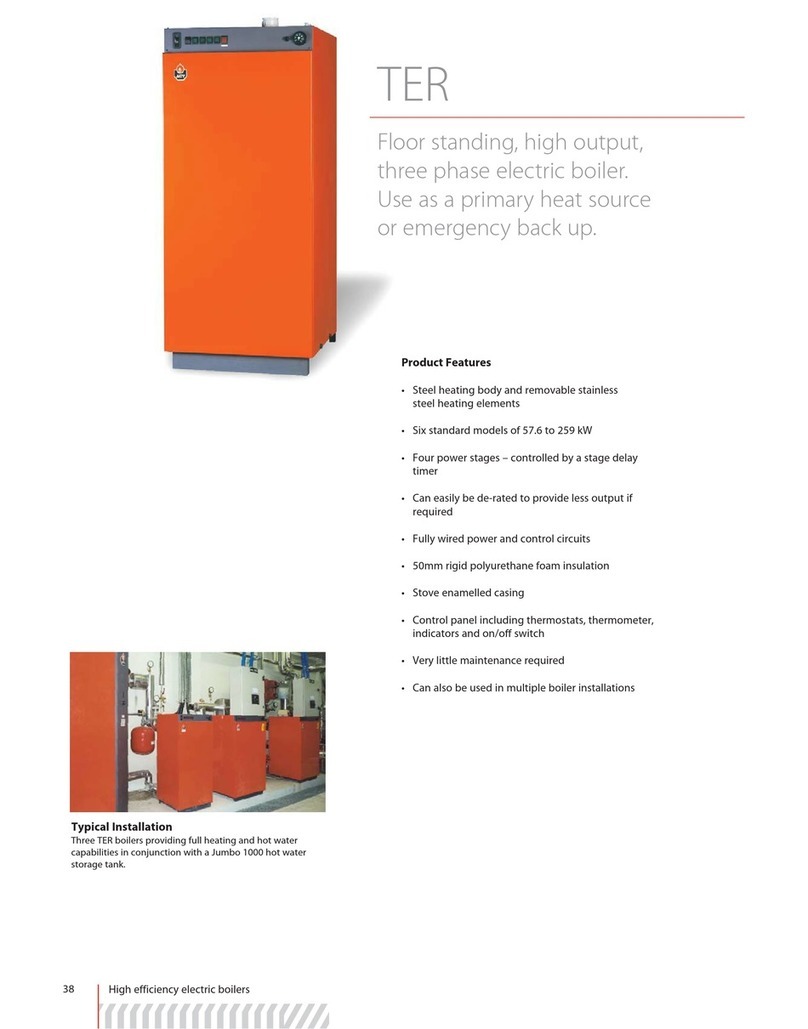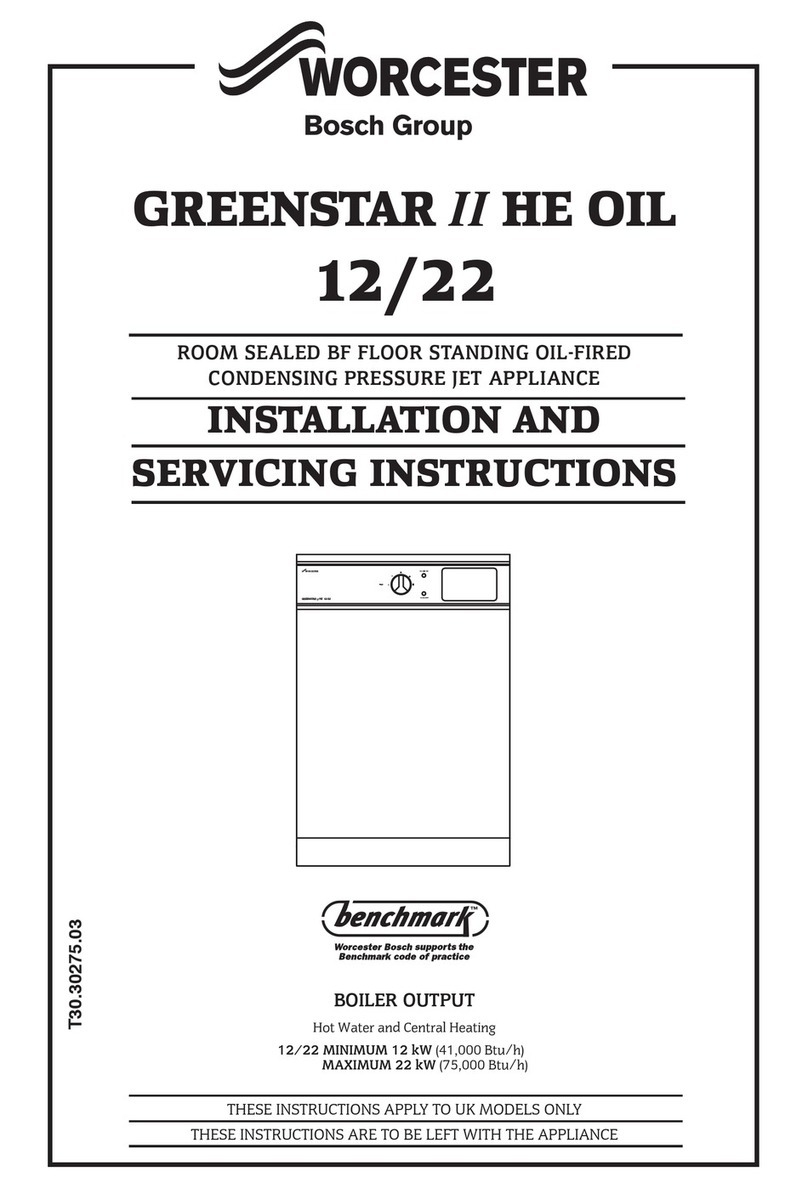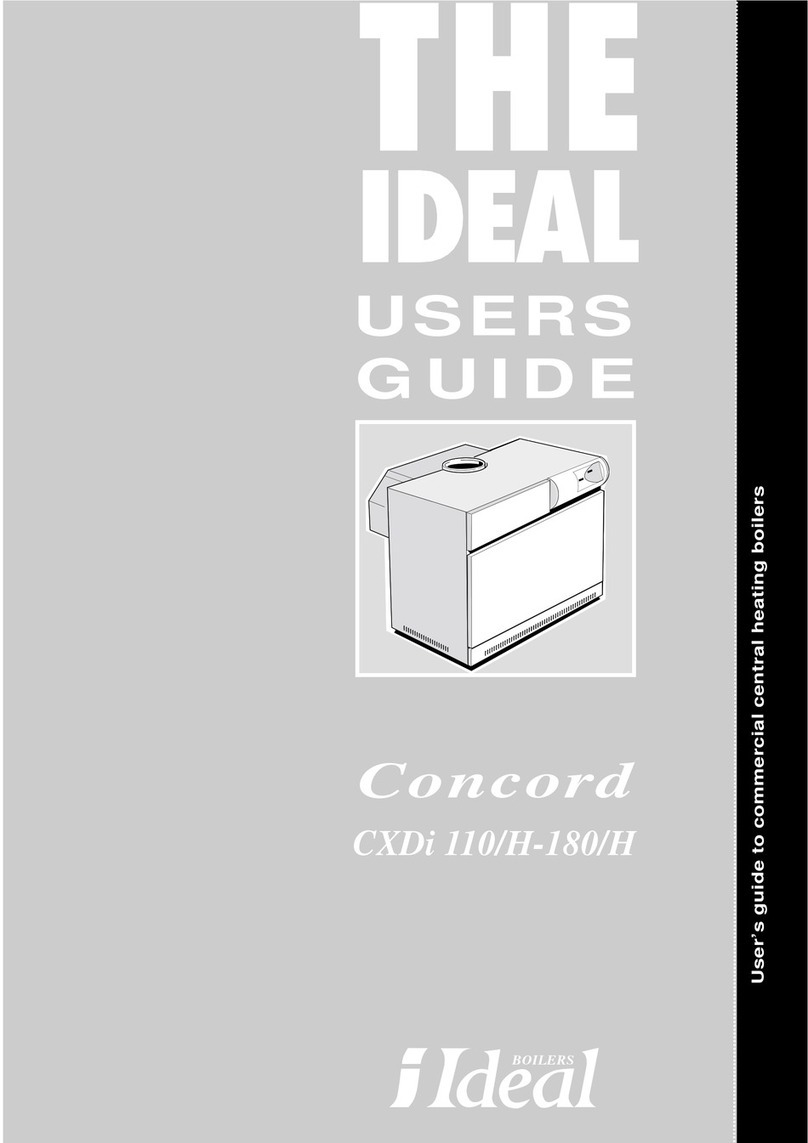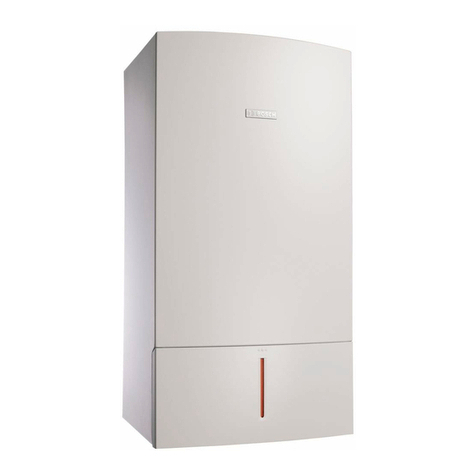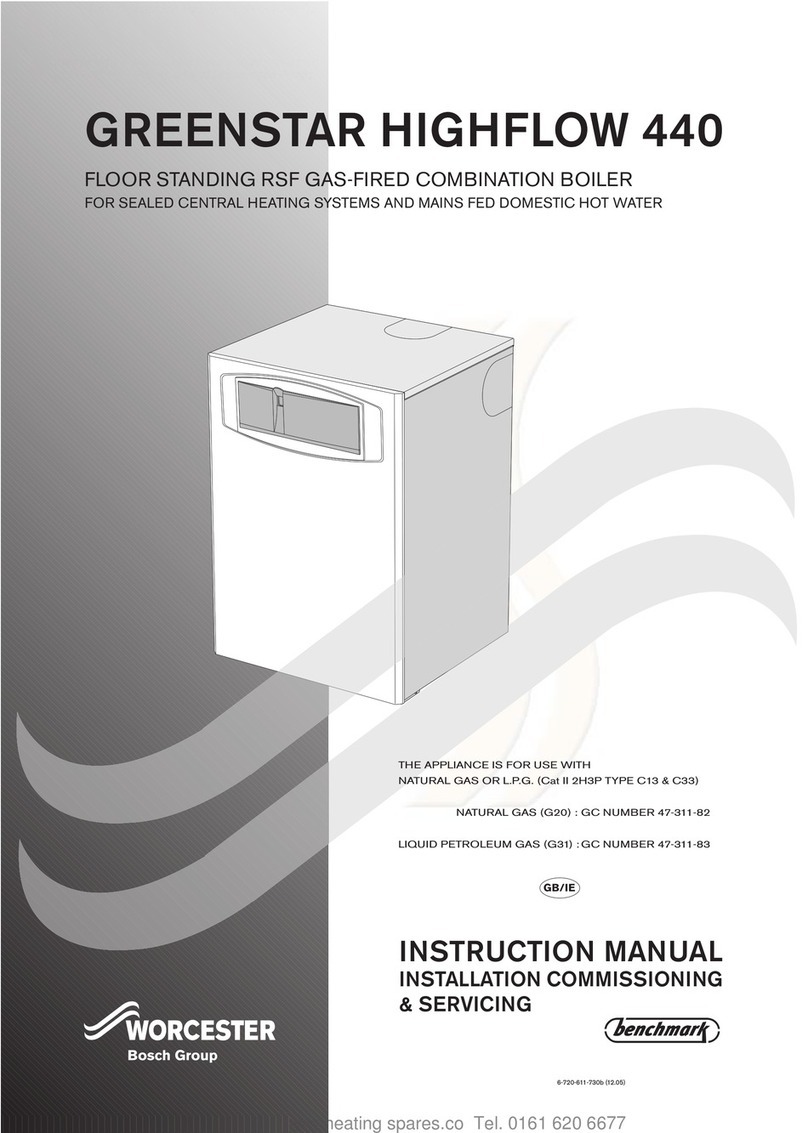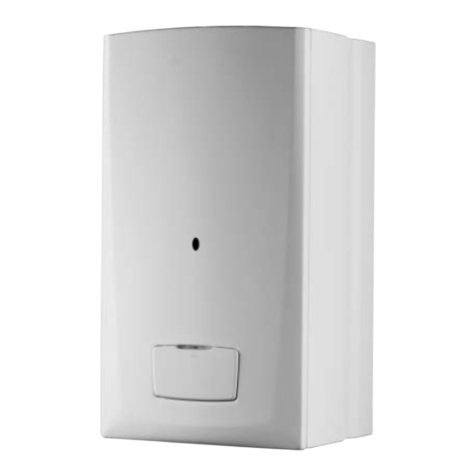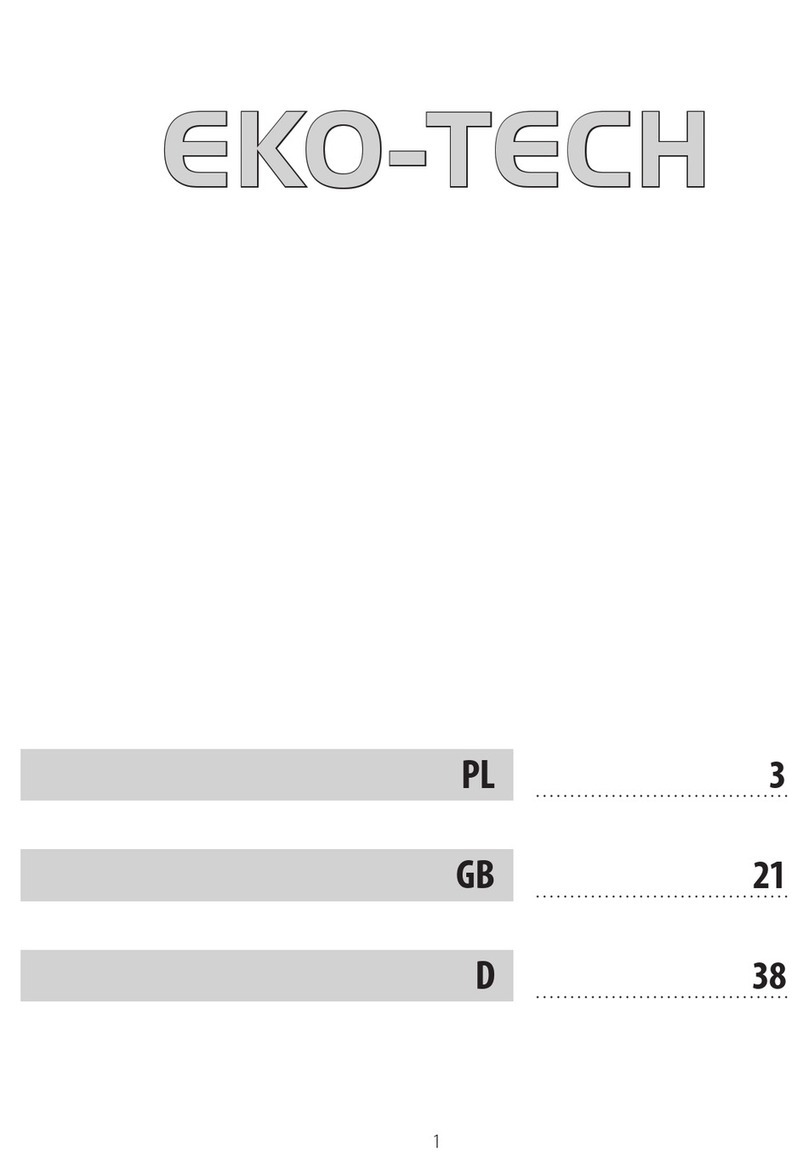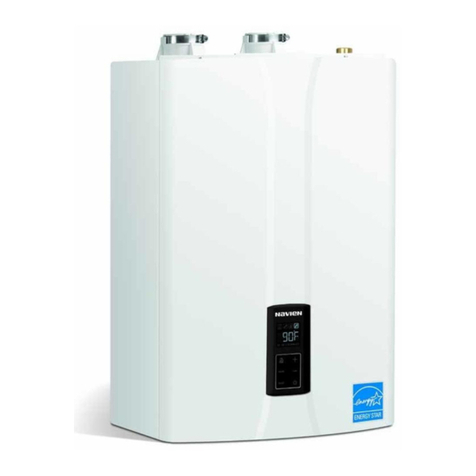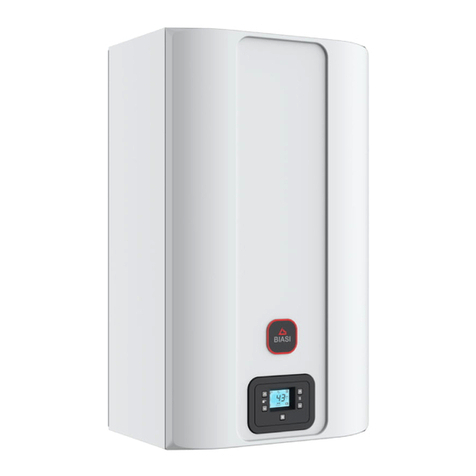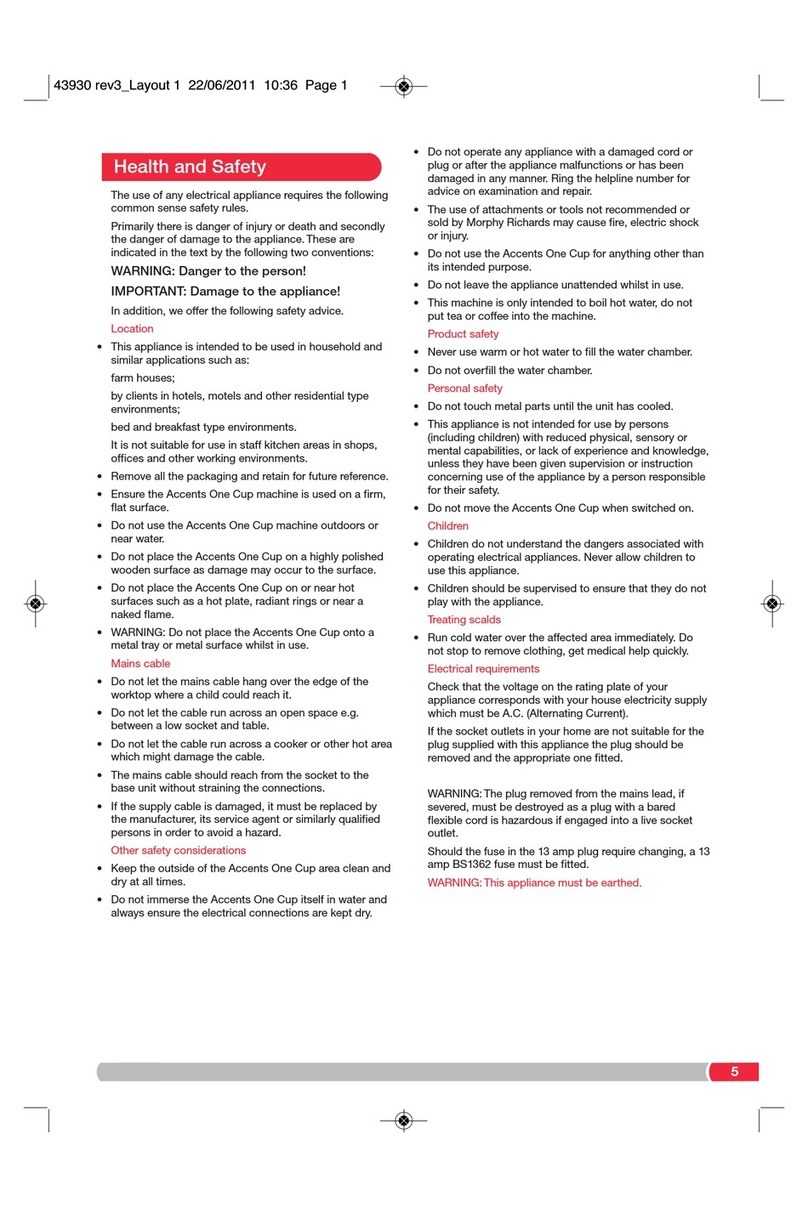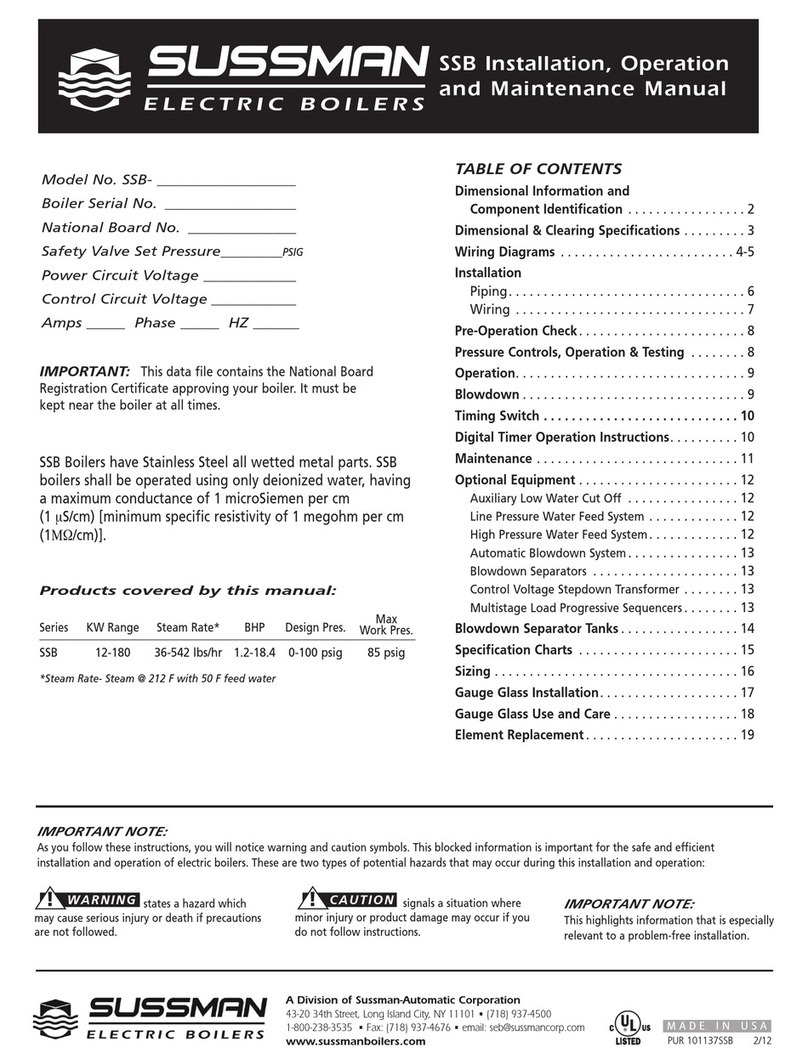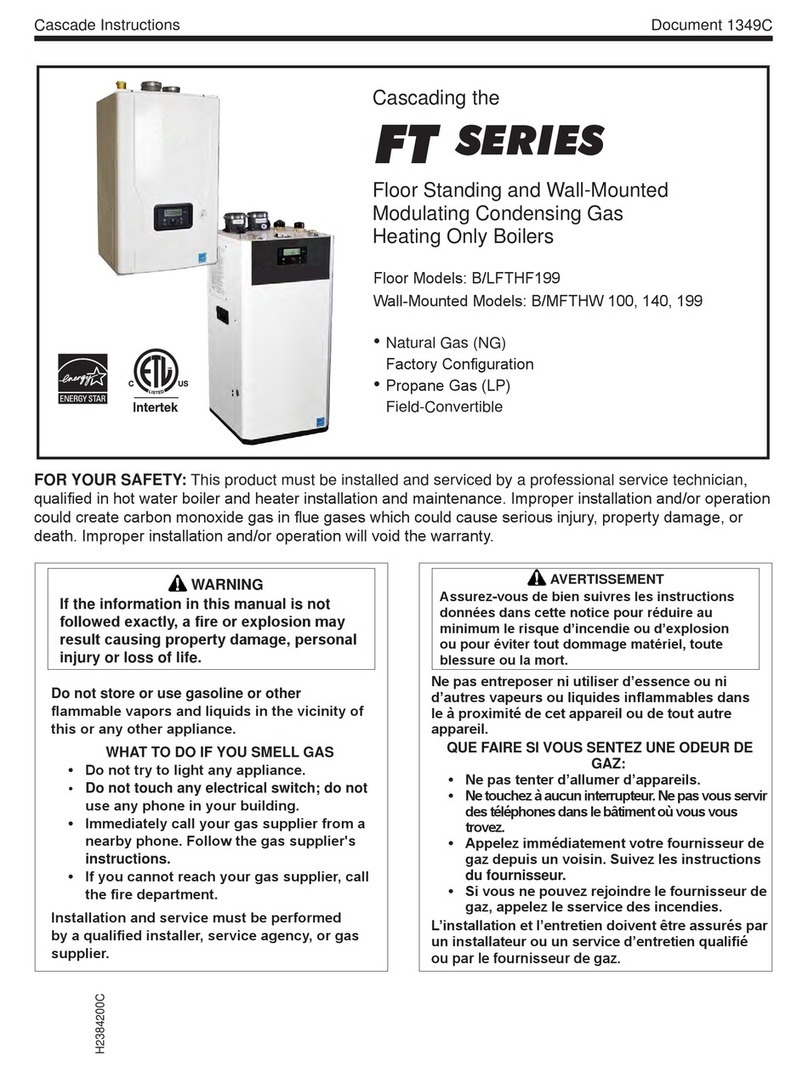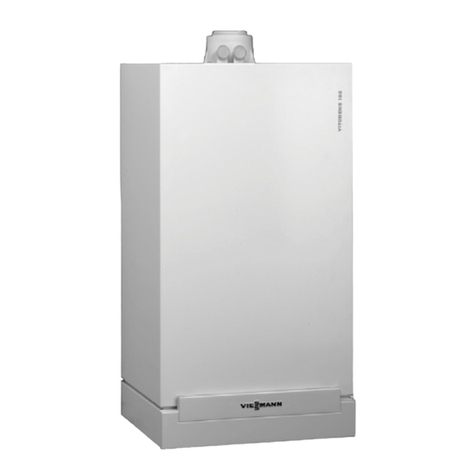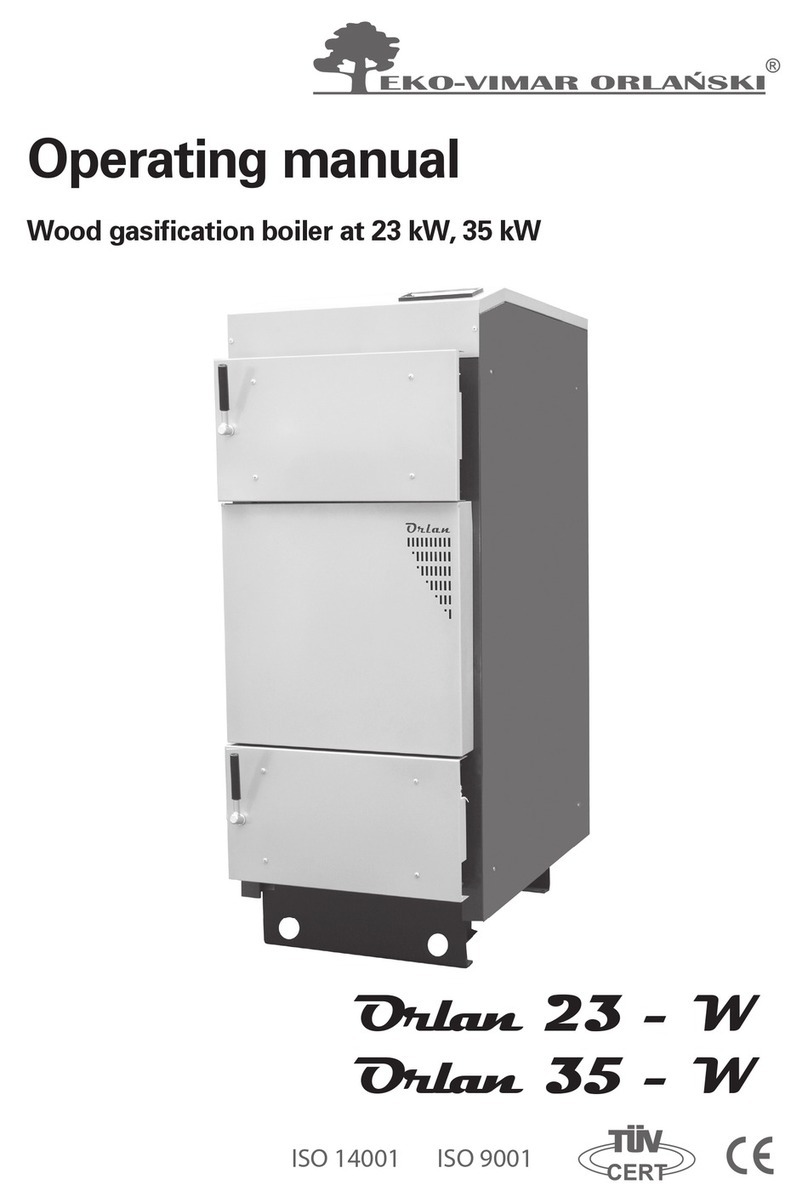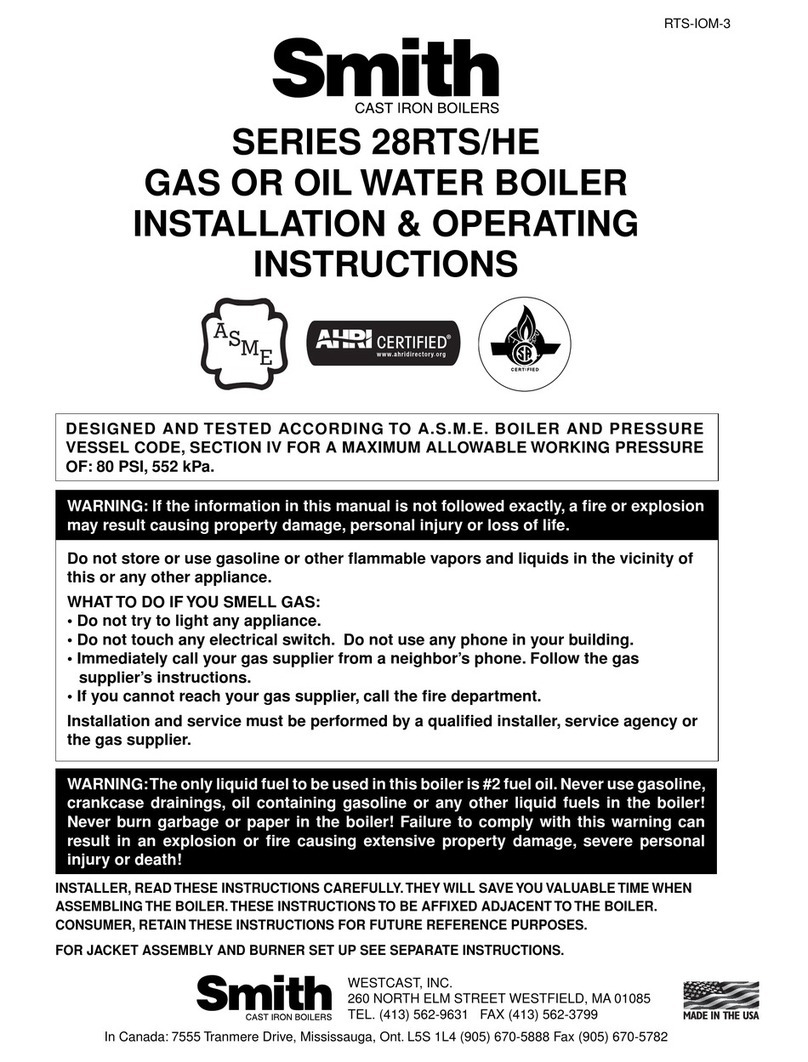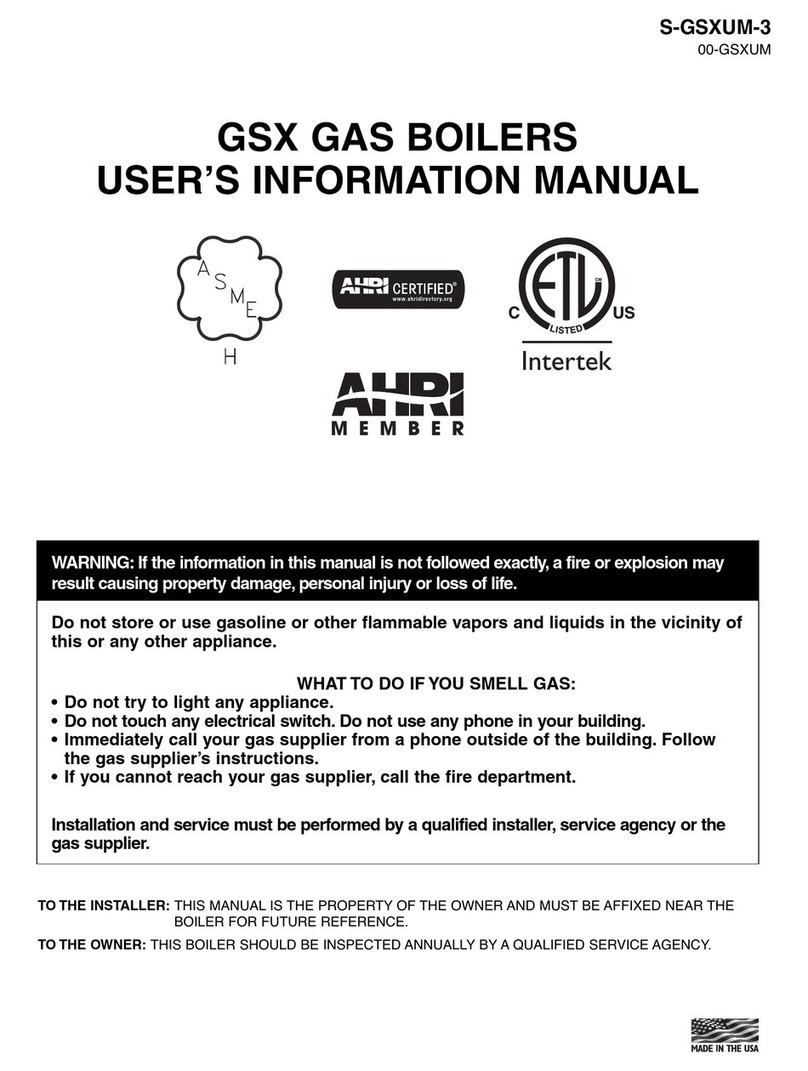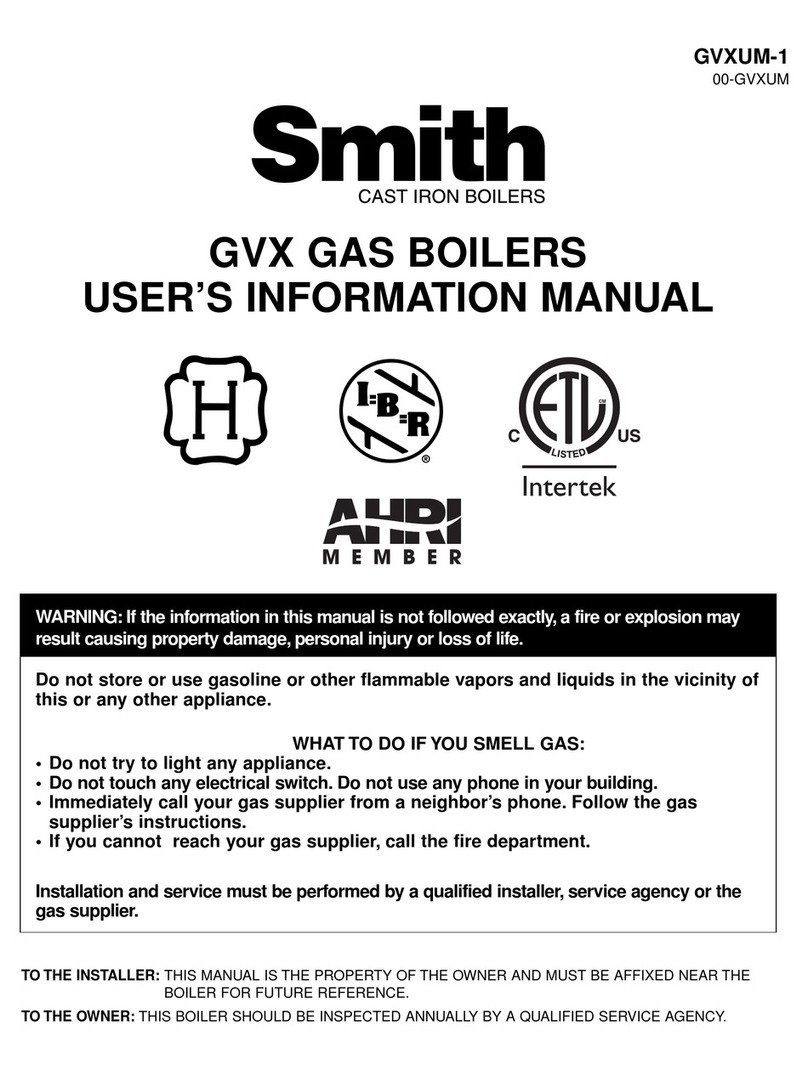
4
SERIES 19HE BOILER
INSTALLATION INSTRUCTIONS
CONTENTS
Series 19HE Exploded View
.............................................page 2
Parts List.......................................................................page 2
Table of Contents..........................................................page 4
General Information......................................................page 4
Boiler Location..............................................................page 4
Codes and Regulations ................................................page 4
Chimney and Breeching .............................................. page 4
Combustion and Ventilation Air.....................................page 5
Assembly of Sections ...................................................page 5
Hydrostatic Test ............................................................page 6
Steam Piping ................................................................page 6
Water Piping ................................................................ page 7
Tankless Heaters ..........................................................page 7
Smokehood ..................................................................page 7
Burner Mounting Plate..................................................page 8
Cleanout Covers...........................................................page 9
Rear Observation Port..................................................page 9
Control Locations..........................................................page 9
Jacket ...........................................................................page 9
Safety and Relief Valves .............................................. page 9
Cleaning Boiler Waterways.........................................page 10
Start Up and Maintenance Instructions ......................page 10
Control Tappings Diagram ..........................................page 11
Warning ......................................................................page 12
1. GENERAL
Series 19HE boilers are wet-base, extended surface, vertical
flue design with integral cast flue gas collector for pressurized
firing with oil, gas or combination power burners. Upper and
lower port hydronic seals are of a special material resistant to
petroleum products and compatible with ethylene and
propylene based anti-freeze (non automotive type) which does
not contain corrosion inhibitors to protect aluminum. The flue
gas joints between sections, etc. are sealed using high
temperature (2300°F) ceramic fiber rope. Access to the heating
surface for cleaning is provided from the left hand side of the
boiler through large cast iron cover plates. A slide damper is
provided in the flue gas outlet for back pressure adjustment.
The boilers are supplied completely knocked down for field
assembly, as factory assembled blocks of sections or
completely packaged boiler-burner units. All items should be
inspected for damage upon receipt, and any damage reported
to the wholesaler and trucker. All components should be stored
in a clean, dry area.
The boilers are conservatively rated for high efficiency
performance with capability for down-firing to match connected
load. The large OBROUND upper port provides transfer area
above the water surface for dry steaming at full load.
2. BOILER LOCATION
The boiler must be installed on a smooth, level, non-
combustible floor or pad as close to the chimney or vent
location as possible to minimize breeching length. Allow
clearance around the boiler for piping, service, maintenance,
cleaning and tankless coil removal. Approximately 30 inches
on the sides is a minimum (Check local code requirements).
Do not install electrical conductors in floor or pad under boilers.
See Figure 1 for boiler floor pad requirements, and Table 1 for
minimum required pad length.
Boiler No. Min. Recommended Pad Length
19HE-3 30"
19HE-4 36"
19HE-5 42"
19HE-6 48"
19HE-7 54"
19HE-8 60"
19HE-9 66"
19HE-10 72"
19HE-11 78"
19HE-12 84"
Table 1
4 5/32" 12 27/32" 12 27/32"
25 21/32"
4 5/32"
34"
32"
JACKET SIDE PANEL
C
LOF BOILER
FLOOR
OR PAD
1 1/2" x 2 1/2" ANGLES
3. CODES AND REGULATIONS
All work in connection with the boiler, burner and controls
must be performed in strict accordance with requirements
of state and local authorities having jurisdiction over boiler
installations.
Figure 1
In the absence of such local requirements, the following should
govern:
A.S.M.E. Section IV - “Heating Boilers"
A.S.M.E. Section VI - “Care and Operation of Boilers”
ANSI/NFPA 31 - “Installation of Oil Burning Equipment”
ANSI/Z223.1 - “National Fuel Gas Code”
ANSI/NFPA 70 - “National Electrical Code”
4. CHIMNEY AND BREECHING
The breeching connection between boiler and chimney should
be as direct as possible with the minimum number of elbows
or bends. It should pitch upwards to the chimney at a rate of
1/4 inch per foot of horizontal run. Generally, the breeching
and chimney should be the same diameter as the boiler outlet
connection.
NOTE: 11 and 12 section uses adapter collar for connec-
tion to 12" diameter vent system.
For fuel conservation and sTable burner performance, the
vent connection from the boiler should not include a
barometric draft control or other opening unless the venting
system can develop an excessive draft, or is required by code.
Typically stack heights less than 50 ft will not require the use
of a barometric damper.












